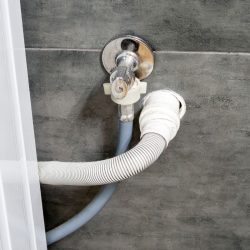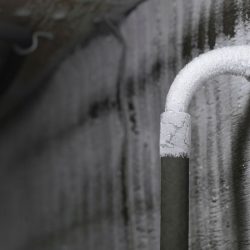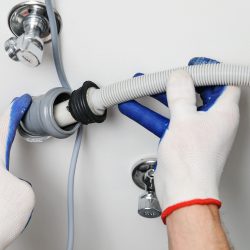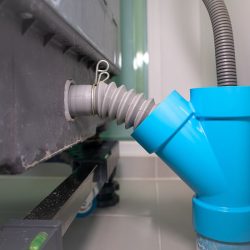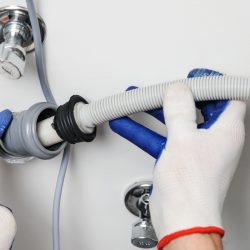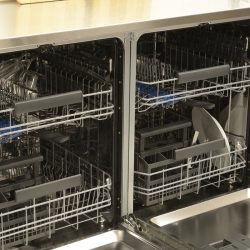At some point in time, you may find that your dishwasher is experiencing drainage problems. One common issue is when the dishwasher fails to drain and holds standing water at the bottom of the tub. What do you do in this scenario? And what causes it? We've looked into this issue for you, and we will discuss it here.
Dishwashers are constantly bombarded with food particles from dirty dishes, sticky sauces, and liquids. Over time, the dishwasher may experience a clog in the drainage hose, drain valve, filters, or other drainage-related compartments.
When this happens, the dishwasher will fail to drain correctly and will overflow as a result. The best thing to do in these scenarios is to find the source of the clog in to remove it.
There are steps that you can take to find the source of the drainage problem. And sometimes, it may not be a drainage problem, but more of a component failure issue. If the latter is the case, you'll need to closely inspect various components within the dishwasher to find the faulty part. Continue reading to learn more about how to troubleshoot this issue.

Most Common Reasons for Dishwasher Drainage Issues
Try troubleshooting the dishwasher yourself before you spend a couple of hundred dollars on hiring an appliance technician. It's helpful to have your user guide handy to help identify the cause and navigate your way around the dishwasher's components.
Once you find the culprit, you may be able to fix the issue yourself. If it's more complex, it's best to hire an experienced appliance technician.
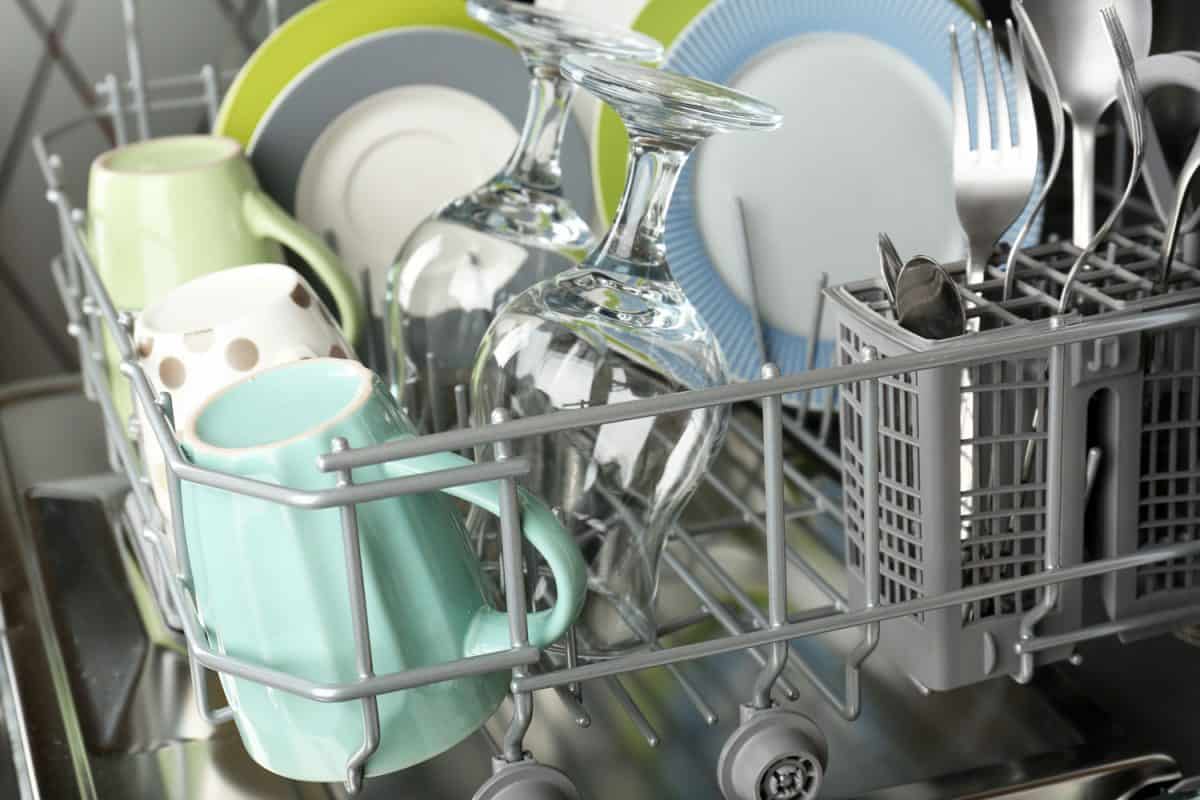
The trap and filter are dirty
Most modern dishwashers will have one or two filters. You can refer to your user's guide to locate them. Remove the filters and clean them off using running water or a paper towel. Ensure that they do not contain any debris, as it can clog them, making it difficult to drain the water out.
The garbage disposal is blocked
If your dishwasher isn't draining, always check the garbage disposal as well. The disposal contains a hose that connects it to the dishwasher for the overspill.
If the disposal is blocked with grease, food, or other debris, it will delay the movement of water from the dishwasher, resulting in standing water. It's also a good idea to clean the garbage disposal every week to prevent this from happening.
The air gap is clogged
The air gap is a small cylindrical metal cover that is usually attached to the top of the sink. This prevents the sink from overflowing with water and is connected to the dishwasher and the garbage disposal. You may see bubbles from time to time—usually when the sink is draining.
Over time the air gap can become clogged with food debris in various obstructions. To clean it, grab a pair of tweezers (or small scissors) and a small brush to remove any caked grime and debris.
Next, pour a cleaning solution on top of the air gap to remove any grease or dirt (you can also use a mixture of baking soda and vinegar). After you've removed any standing water from the bottom of the tub, run the dishwasher to see if this fixes the issue.
The drain hose has a clogged or kink
Drain hoses can become clogged with debris, and as a result, they will cause the dishwasher to hold standing water instead of draining. They can also develop kinks, which will block water from exiting the hose during the wash or rinse cycle.
If the dishwasher is not draining, turn off the unit and pull it away from the wall. Next, locate the drainage hose and detach them from the valves. Clean the drainage hose with a snake or wire hanger and ensure that it has no kinks. Replace the hose and attempt to run another cycle to see if this fixes the issue.
Make sure the door latch is working
If the door latch is faulty or broken, the dishwasher may stop mid-cycle. As a result, it will also fail to drain at the end of the wash or rinse cycle. Sometimes door latches can break, and when they do, they'll need to be replaced.
If you notice that the door latch is missing or hanging freely, you'll need to replace it to repair the dishwasher. This can be a relatively simple DIY task, or you can outsource the job to a contractor.
The drain valve is faulty
Sometimes the valve that connects to the drainage holes can become faulty or frozen. When this happens, it will not stop the flow of water during the wash and rinse cycles. If this is the case, the valve will need to be replaced. This issue isn't as common, but you may see it in dishwashers over seven or eight years old.
The dishwasher's motor is bad
Sometimes a failing motor will cause the dishwasher to stop mid-cycle, resulting in standing water or drain failure. If this happens, you'll need to remove the standing water ASAP to prevent flooding issues in your home when the dishwasher is repaired or replaced.
You can access and test the motor yourself by removing the front panel and testing the motor's continuity. Expect to pay anywhere from $60 to over $130 for a new dishwasher motor. Installation can range anywhere from $75 to over $200.
What causes a dishwasher not to drain completely?
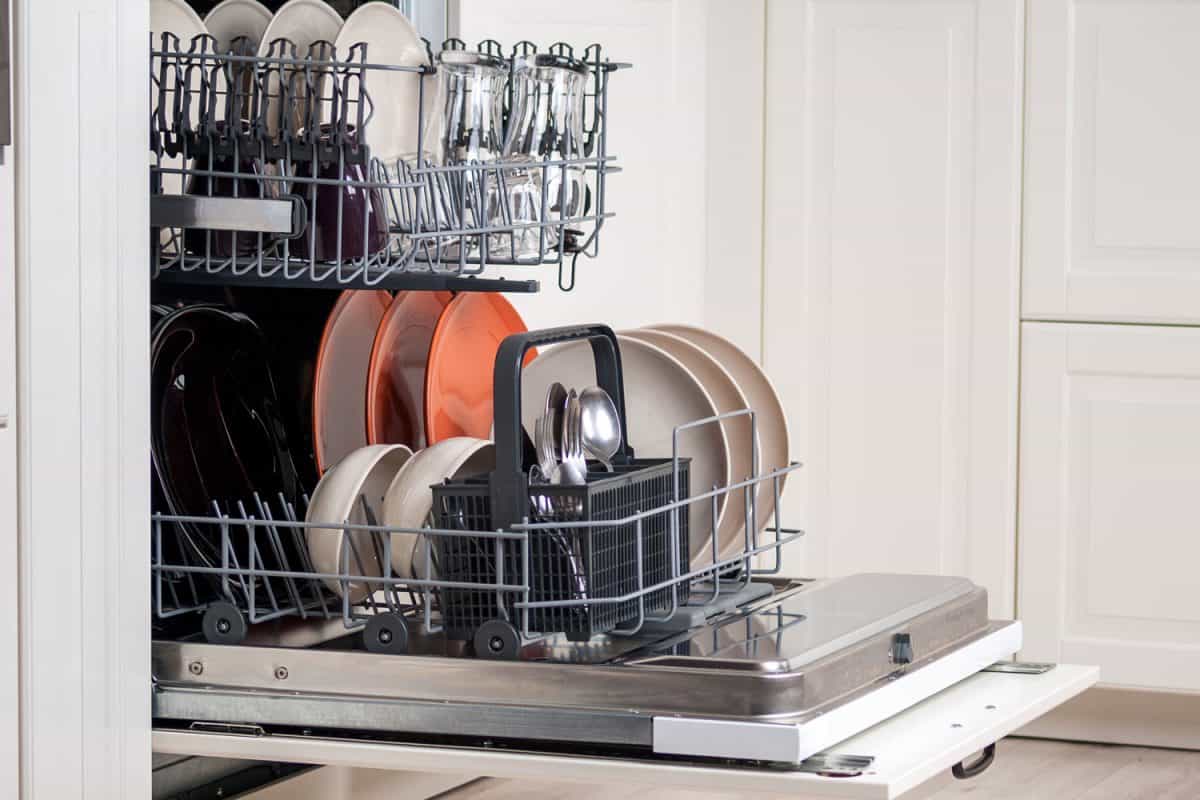
There are a few reasons why a dishwasher may fail to drain. The most common cause is an underlying issue with drainage components, including the drain valve, drain hose, or filters. These issues often occur when there is a buildup of food particles are other sediments within these systems.
Sometimes you may need to take a few additional steps to find the source of the drainage issue. However, it's always important to first power off the system and remove any standing water immediately. You also want to look at the air gap at the top of your sink to see if it is clogged. And if it is, be sure to clean it thoroughly as well.
Can I manually drain my dishwasher?
Yes, you can manually drain your dishwasher. Here are the steps to do it.
1. Prepare the dishwasher
Remove all of the dishware and silverware from the dishwasher. Next, remove the top and bottom racks to ensure that you have easy access to the bottom of the unit's tub.
2. Turn off the dishwasher
After removing the dishware, disconnect the electricity from the dishwasher. First, power off the unit at the control panel and then remove the power cord. This is very important, as you don't want any electricity traveling to the machine while dealing with water.
3. Remove any standing water with a large towel
You may need anywhere from one to three towels, depending on how much water is at the bottom of the tub. Use the large dry towels to soak up the water and wring them out in the sink or a bucket.
4. Check the drainage equipment
Next, try to find the source of the drainage issue. This includes checking the drainage holes, valves, filters, and the air gap on top of the sink. Disconnect, remove and then clean these parts as necessary to ensure that no debris or grime is clogging them.
Place a tile on the floor before disconnecting the drainage holes to prevent water damage. Clear out the hose by running it under water or using a snake. At this point, any remaining water should clear out from the hose. Double-check the drain valve to ensure that it is not damaged or faulty.
5. Run a test cycle
Next, reassemble the dishwasher and run a test cycle. At the end of the cycle, open the dishwasher to see if it is still experiencing drainage issues. If it is, you may need to reach out to an appliance technician to help troubleshoot the problem.
How do I know if my dishwasher drain hose is clogged?
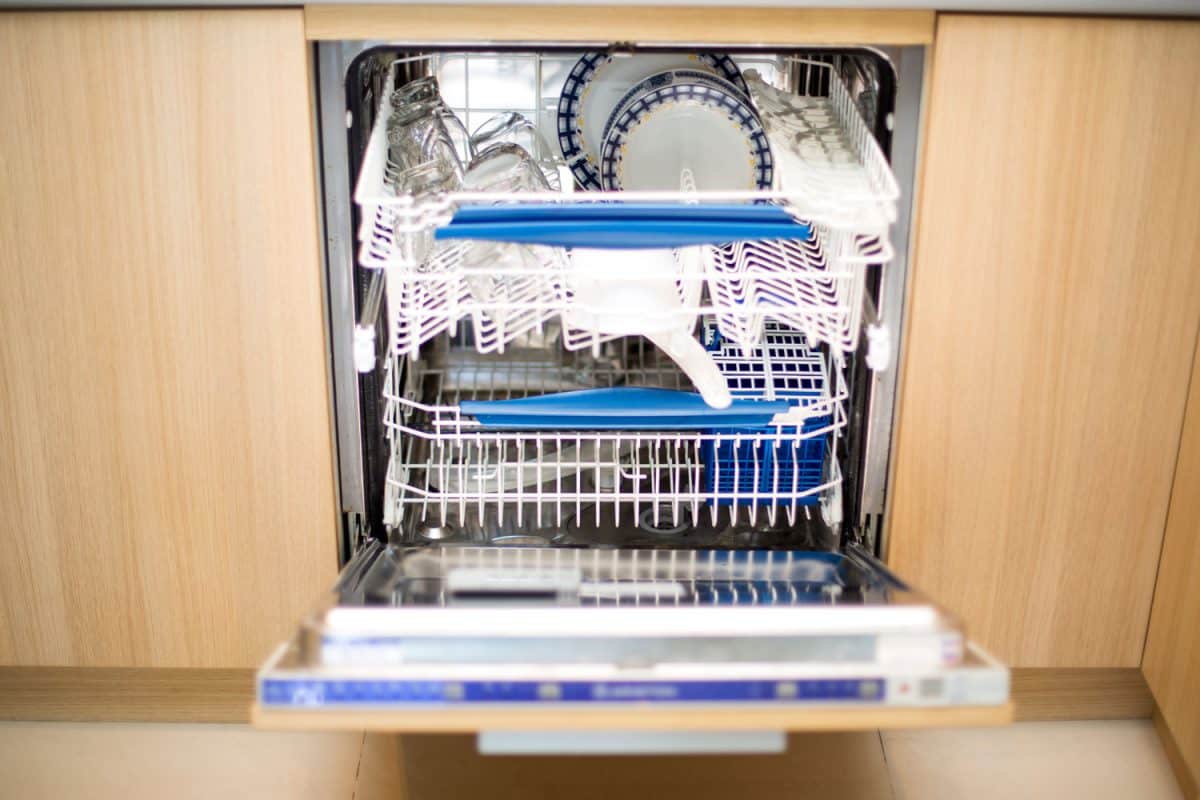
The biggest sign that a dishwasher drain hose is clogged is the dishwasher failing to drain. If you notice standing pools of water at the bottom of the tub after a cycle, the chances are that there is a drainage issue with the unit.
To fix the issue, you'll need first to drain the water and then check the drain components to troubleshoot the problem. You also want to inspect your garbage disposal and air gap.
Can you snake a dishwasher drain?
No, snaking a dishwasher drain is not recommended. However, you can remove the drain hose from the dishwasher and snake this component. This will remove any debris or grime that may be causing a clog inside the hose.
Wrapping Things Up
We hope this post has helped illustrate how to troubleshoot a dishwasher that does not drain. Remember that some problems may result from a simple clog, while others may require more troubleshooting. In any event, be sure to refer to your user manual to find the proper steps to troubleshoot the issue.
Before you go, be sure to check out some of our other posts:
How Narrow Can A Kitchen Cabinet Be?
Should You Unwrap Dishwasher Tablets?

